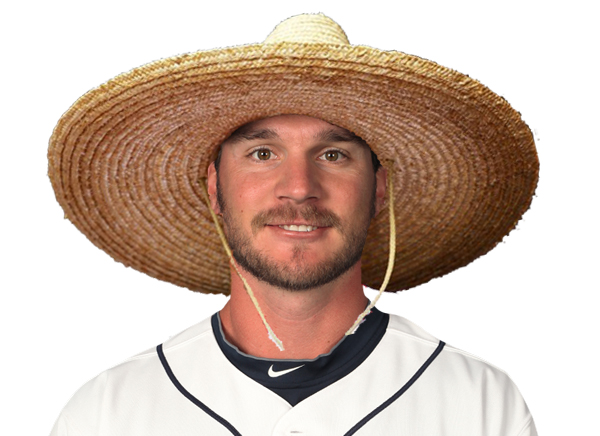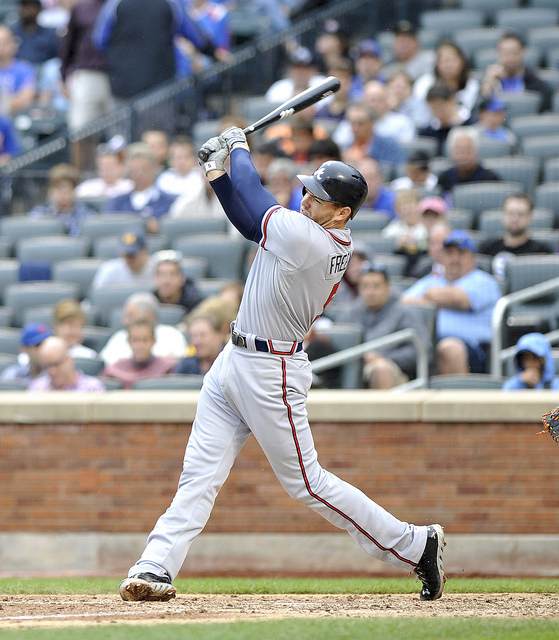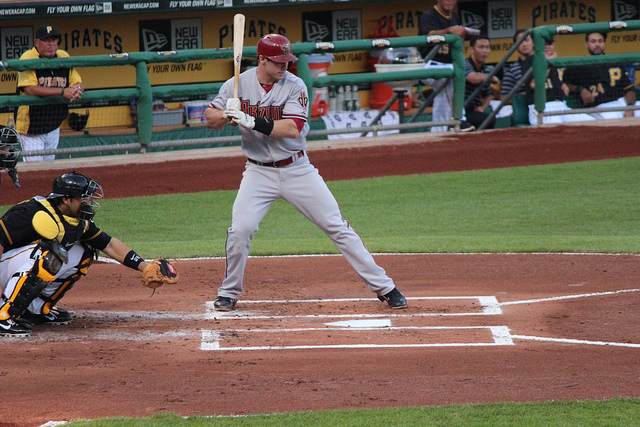Catcher Sleepers and Sliders

The key to winning in fantasy baseball is the same as in real baseball. The key is to find value where others do not. In the fantasy world we call these players “sleepers.” Of course, in real baseball they use more sophisticated statistics every year. Those same statistics can sometimes get you in trouble in fantasy baseball. These numbers often exclude the very numbers that fantasy sports are built on (runs scored, RBIs, wins, saves, ect).
One of the biggest mistakes that so-called statisticians make is that they rely too heavily on these advanced metrics. In the coming weeks, I will introduce you to a statistic I developed that attempts to marry the sabermetric world with the fantasy world. For the time being, I will provide an introduction to how we can use complex statistics to help identify players that we might call sleepers and those that we might call overrated. We will begin with catchers, but first let me provide a brief glossary of terms.
BABIP= Stands for batting average on balls in play. A typical player will have a BABIP of .300, but that will change depending on the position. For instance, catchers will fall somewhere between .280 and .290 on average.
LD%= stands for line drive percentage. Almost every player averages between 15 and 20 percent of his batted balls as line drives. Line drives are crucial as a higher percentage of them turn into hits than any other batted ball. A player with a LD% over 20 percent will almost certainly have a high BABIP.
GB%= stands for groundball percentage. Ground balls actually turn into hits at a higher rate than flyballs, so a higher ground ball rate is actually preferable. This is especially true at positions manned by faster players.
FB%= stands for fly ball percentage. Fly balls are more likely to turn into extra base hits (obviously home runs included) but they also turn into outs more often. So, depending on the position and the player, a high fly ball rate could be death for a hitter.
HR/FB%= this is the percentage of fly balls that become home runs. The industry average is between eight percent and ten percent. An extremely high or low rate in comparison with career norms could be a warning that things are going to change drastically.
Contact%= This is the percentage of swings that turn into contact. Obviously, we could break this down further by contact on balls outside the zone and balls inside the zone, but a simple contact rate will suffice for the time being.
Now that we know what we are dealing with in terms of statistics, it is time to take a look at several catchers that either enjoyed uncharacteristically good seasons or uncharacteristically bad ones. In either case, we will be able to tell whether the underperforming catchers will bounce back or whether the unusually good ones will be able to sustain their performance.
Possible Sleepers
Russell Martin—Pittsburgh Pirates
|
BABIP |
Contact |
LD% |
GB% |
FB% |
HR/FB |
|
| 2012 |
.222 |
79.6% |
19.4 |
47.8 |
32.7 |
19.8 |
| 2011 |
.252 |
80.8% |
19.2 |
47.3 |
33.4 |
15.9 |
| 2010 |
.287 |
82.0% |
20.6 |
51.1 |
28.3 |
6.5 |
| 2009 |
.284 |
82.8% |
20.5 |
48.8 |
30.7 |
5.4 |
| 2008 |
.309 |
83.5% |
19.4 |
51.1 |
29.6 |
9.4 |
Russell Martin is a contradiction in terms. On the one hand, you should easily expect his batting average to go up based on his BABIP alone. Granted, his contact rate is steadily going down, but it is not falling so quickly as to expect two consecutive poor seasons in that category. That means that there is a good amount of bad luck involved. Clearly, he is not the offensive player he was four or five years ago, but he should be considerably better than he has been the past couple of seasons.
Nick Hundley—San Diego Padres
|
BABIP |
Contact |
LD% |
GB% |
FB% |
HR/FB |
|
| 2012 |
.196 |
76.2% |
18.0 |
39.3 |
42.7 |
4.7 |
| 2011 |
.362 |
79.8% |
21.2 |
41.3 |
37.5 |
11.5 |
| 2010 |
.293 |
78.8% |
19.3 |
41.0 |
39.6 |
9.5 |
| 2009 |
.303 |
75.2% |
21.5 |
31.5 |
47.0 |
9.4 |
| 2008 |
.288 |
78.0% |
17.2 |
39.1 |
43.7 |
7.6 |
Let’s put aside the abnormally low BABIP aside. There is nothing that can fully explain that. However, there are some warning signs that do point towards lower BABIP scores. His fly ball rates are higher than normal and that comes in a ballpark that is horrible for fly ball hitters. His line drive rate was somewhat lower last year, but it has been lower and he has come out okay in terms of BABIP. So, he has to be better than this and even if he goes up just 70 or 80 points he becomes a viable fantasy player again.
Carlos Santana—Cleveland Indians
|
BABIP |
Contact |
LD% |
GB% |
FB% |
FB/HR |
|
| 2012 |
.278 |
79.2 |
19.1 |
37.8 |
43.1 |
11.5 |
| 2011 |
.263 |
77.5 |
15.4 |
40.0 |
44.7 |
16.0 |
| 2010 |
.277 |
77.3 |
21.1 |
43.9 |
35.0 |
11.1 |
Santana is hardly a sleeper, but when you take the development of Buster Posey and the presence of Joe Mauer, he can be lost in the shuffle. He probably should be number three on most lists, but some will put guys like Yadier Molina in his rightful slot. To tell you the truth, there is nothing that explains his lower BABIP. Mind you, he shouldn’t be as high as .300 given his higher fly ball rate, but his strong home run percentage points to a target of .290. Add about 15 to 20 points to that BABIP and you have an average healthily above .250.
Sliding Back
John Jaso—Oakland Athletics
|
BABIP |
Contact |
LD% |
GB% |
FB% |
HR/FB |
|
| 2012 |
.298 |
84.5 |
25.4 |
46.4 |
28.2 |
14.3 |
| 2011 |
.244 |
88.6 |
17.7 |
43.1 |
39.2 |
6.1 |
| 2010 |
.282 |
88.4 |
16.7 |
46.3 |
37.0 |
4.5 |
| 2008 |
.250 |
73.3 |
25.0 |
37.5 |
37.5 |
0.0 |
Jaso came out nowhere last season and it is imperative that we find out why. You should know that 2008 was a cup of coffee, so those percentages really shouldn’t count. What we saw in 2012 is a conversion of fly balls into line drives. That explains the difference in batting average on balls in play. On top of that we saw an abnormally high percentage of his fly balls turn into home runs. Oakland Coliseum is not a great place for power hitters, so that combination should throw him back a peg. He has the highest contact rate of the catchers we are profiling, so not all is grim.
A.J. Pierzynski– Texas Rangers
|
BABIP |
Contact |
LD% |
GB% |
FB% |
HR/FB |
|
| 2012 |
.280 |
84.6 |
22.2 |
42.0 |
35.8 |
18.6 |
| 2011 |
.291 |
90.4 |
20.9 |
50.6 |
28.5 |
6.5 |
| 2010 |
.278 |
86.3 |
15.6 |
48.5 |
35.9 |
5.8 |
| 2009 |
.312 |
88.0 |
20.0 |
47.3 |
32.7 |
8.7 |
| 2008 |
.300 |
84.9 |
17.9 |
44.0 |
38.1 |
7.3 |
Which one of these numbers is not like the other? If you guessed the home run per fly ball rate then you are correct. If we go back even further we will note that Pierzynski is a below average power threat in that category. Why did he jump so far in one season? Well, it is anyone’s best guess, but when you look at his other seasons you would have to bet on him not repeating his power performance.



